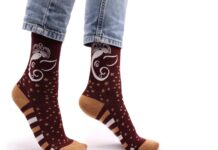Vidya Sethuraman
India Post News Service
A recent CDC report on a survey of high school students revealed that 55.1% describe suffering emotional abuse, 44.2% reported persistent feelings of sadness or hopelessness and 9% attempted suicide. Different groups suffered a bit differently, according to the survey: more young women and LGBTQ+ youth saw a rise in suicidal behavior, more Asian kids confronted racism and hate, more Black youth and Native Americans experienced hunger and economic devastation and along with Latinos, suffered the mental stress of the effects of the pandemic in their essential worker families and communities.
A panel of experts at the EMS briefing explained what is happening and talked about what parents and others can do to avert another “pandemic”, that of future adults with serious emotional and mental disorders. They argue that civic engagement in particular, can be a mental health intervention: building opportunities for young people to speak truth to power and connect with their communities is key for their development.
Angela Vasquez, MSW, policy director for mental health at The Children’s Partnership said nearly 50% of youth who are severely impaired with a major depressive episode did not receive treatment. Suicide is the second leading cause of death for Native youth, so nearly three and a half times higher than the national average. And high school girls across all races and ethnicities made plans to attempt suicide more than boys. Over half of Latina girls are worried about a friend or family member being deported. Since the pandemic started, Asian youth have been experiencing harassment and bullying. The climate of fear further restricts children, access to education, public benefits, and other services.
Dr. Ilan Shapiro, Pediatrician, chief medical affairs officer of Altamed federally qualified health centers; Los Angeles said most of my patients are not exposed to the online world. However, in a year of the pandemic, they are doing nothing at home, eating and drinking, and feeling very depressed and afraid to go out. The impact of the epidemic on people is terrifying. “At least 50% of the patients that I take care of, were directly touched by COVID-19: they were sick, they had a family member that was close to them that actually died, or they were harmed because of the pandemic. We need to translate medical terms to an actionable language that our community can actually do something with.
Dr. Myo Thwin Myint, an assistant in psychiatry at Tulane University, said that particularly our LGBTQ and trans kids suffer disproportionately from the mental health challenges because of the unjust societal challenges. We need to be thinking very creatively how we are going to be providing care.
Sydney McKinney, PhD, Executive Director of the National Black Women Justice Institute based in Brooklyn addressing the mental health and wellness of black women and girls is really vital to reducing their risk of coming into contact with the juvenile legal and the criminal legal system. Among African-American women, the suicide death rate increased 182 percent from 2001 to 2017. Media can elevate and bring attention to mental health and wellness programs and services that are culturally affirming and gender responsive. So much of what people know are clinical modalities, which many of the folks in our communities are reluctant to engage in for very well founded reasons.







